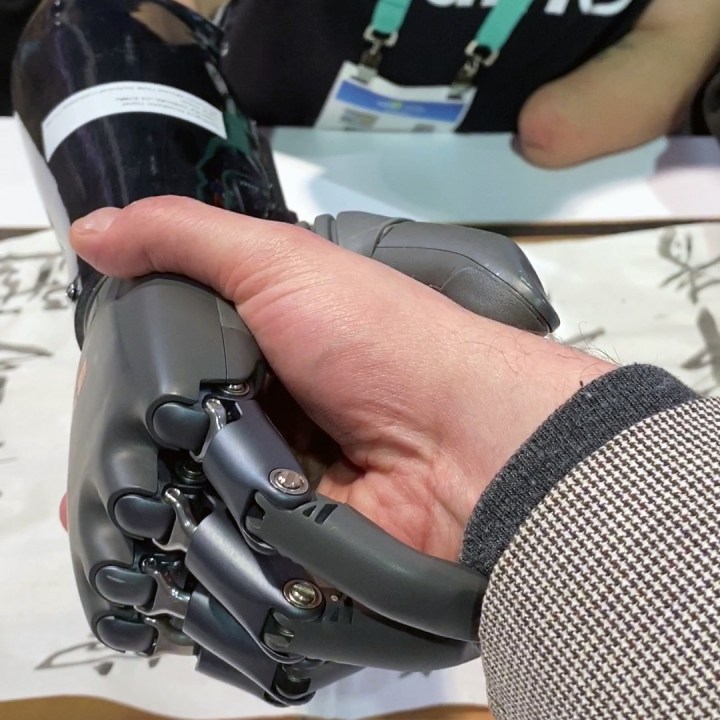This story is part of our continuing coverage of CES 2020, including tech and gadgets from the showroom floor.
There are some moments you just know that you’re staring the future in the face. The moment at CES that gave us that feeling more than any other? Shaking hands with an astonishingly lifelike artificial intelligence-aided prosthetic hand, controlled via the wearer’s brain waves and muscle signals. It felt solid, natural, and… well, pretty much like any other handshake, really.
“The fingers are articulated independently; the pinky curls a little bit more around the palm of your hand,” said Jeremy Kaplan, Editor-in-Chief at Digital Trends. “Exactly like it would if you were shaking hands with someone else. That really stood out to me.”

The hand in question is the work of BrainCo, a cutting edge EEG science and robotics startup that the world is almost certainly going to hear a whole lot more about in the years to come. At Digital Trends, we’ve covered plenty of cool prosthetic limb projects. However, it’s incredibly rare to come across one that works as smoothly and intuitively as BrainCo’s prosthetic hand. Not only can it be intuitively controlled, sensing electrical instruction signals from the brain via the residual limb they travel down, but its movement is impressively dexterous. It could be a game-changer for amputees everywhere.
“We’ve developed the world’s most affordable A.I.-powered prosthetic hand,” Max Newlon, president of BrainCo, told Digital Trends. “[It] gives amputees control of the prosthetic just like you or I would control our hands.”

The dexterity of the hand allows it to be used for a wide range of tasks. At CES, demos included not just shaking hands, but also fine-grain movements such as writing calligraphy. Heck, it can even be used to play the piano. Users are free to program their own series of gestures and capabilities, which can be done in a short space of time.
In terms of pricing, the unit is expected to cost between $10,000 and $15,000 when it launches later this year. This is a fraction of the price of high-end prosthetic hands — which should enable this to find a wider audience base among those who need it the most. FDA approval is pending.
As much as we can’t get enough of smart televisions, self-driving cars, cool robots, and plenty more, it’s hard to get more exciting than amazing technology which promises to make a real, life-changing difference for users. This is one of them. No wonder Digital Trends awarded it our Top Tech “Tech For Change” CES 2020 prize.
Follow our live blog for more CES news and announcements.



